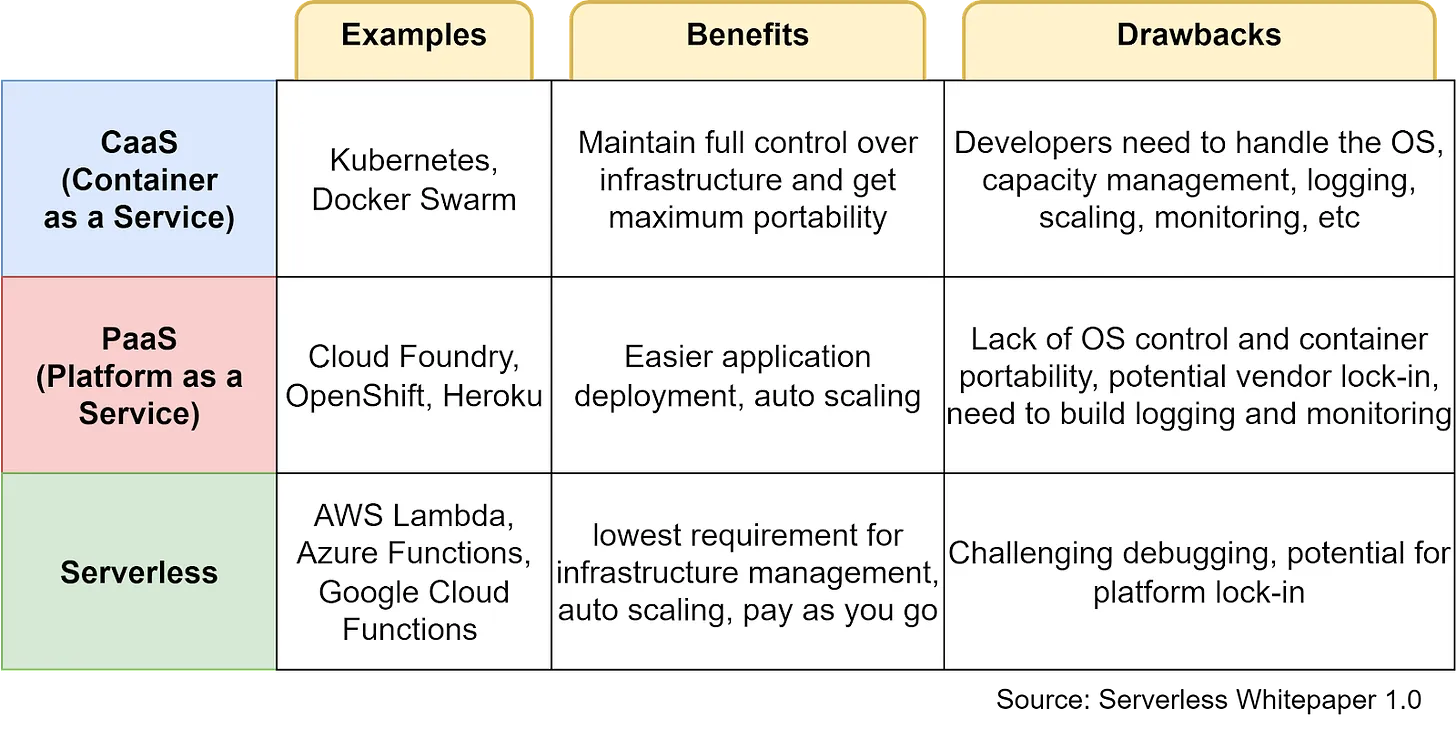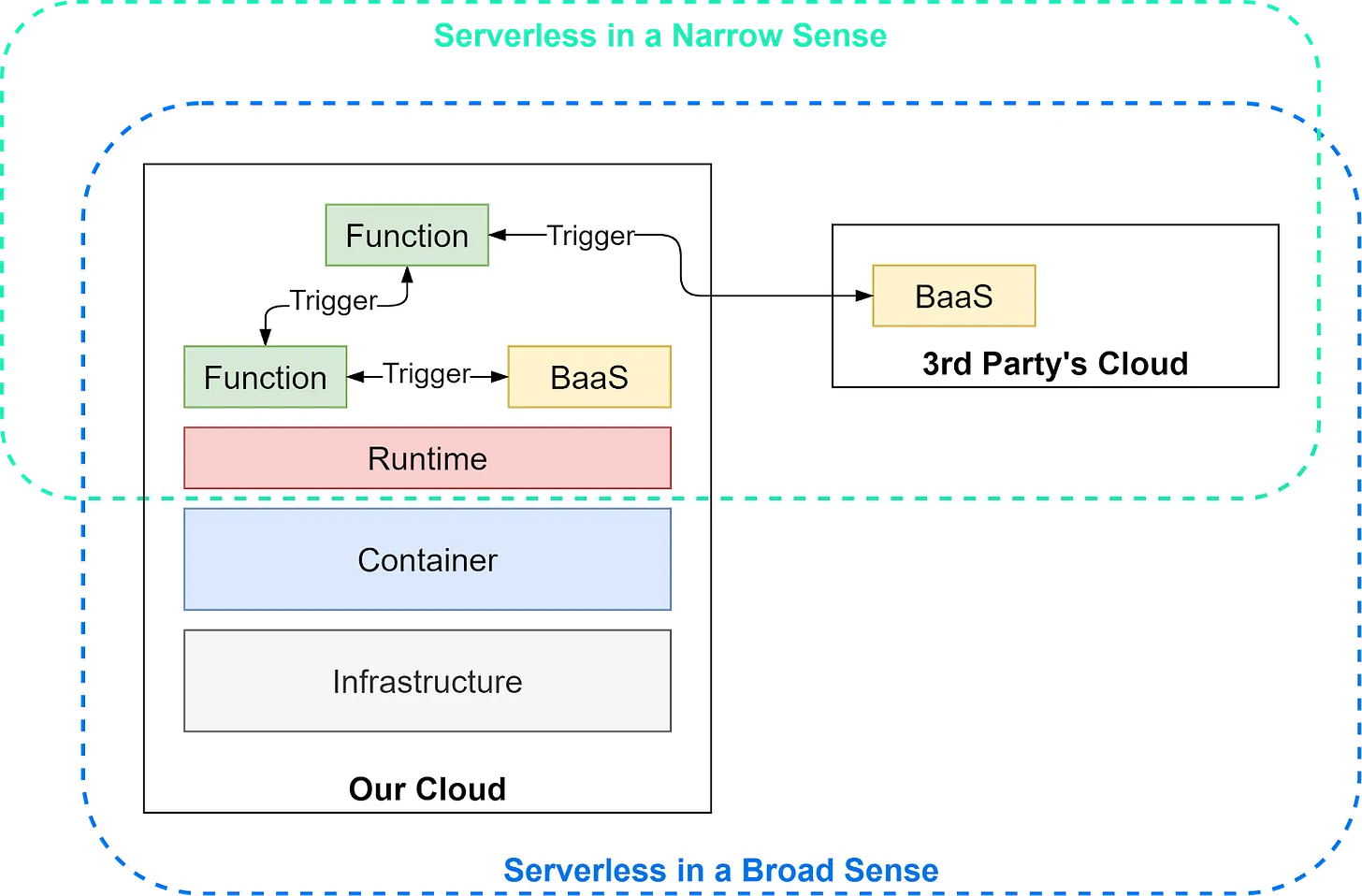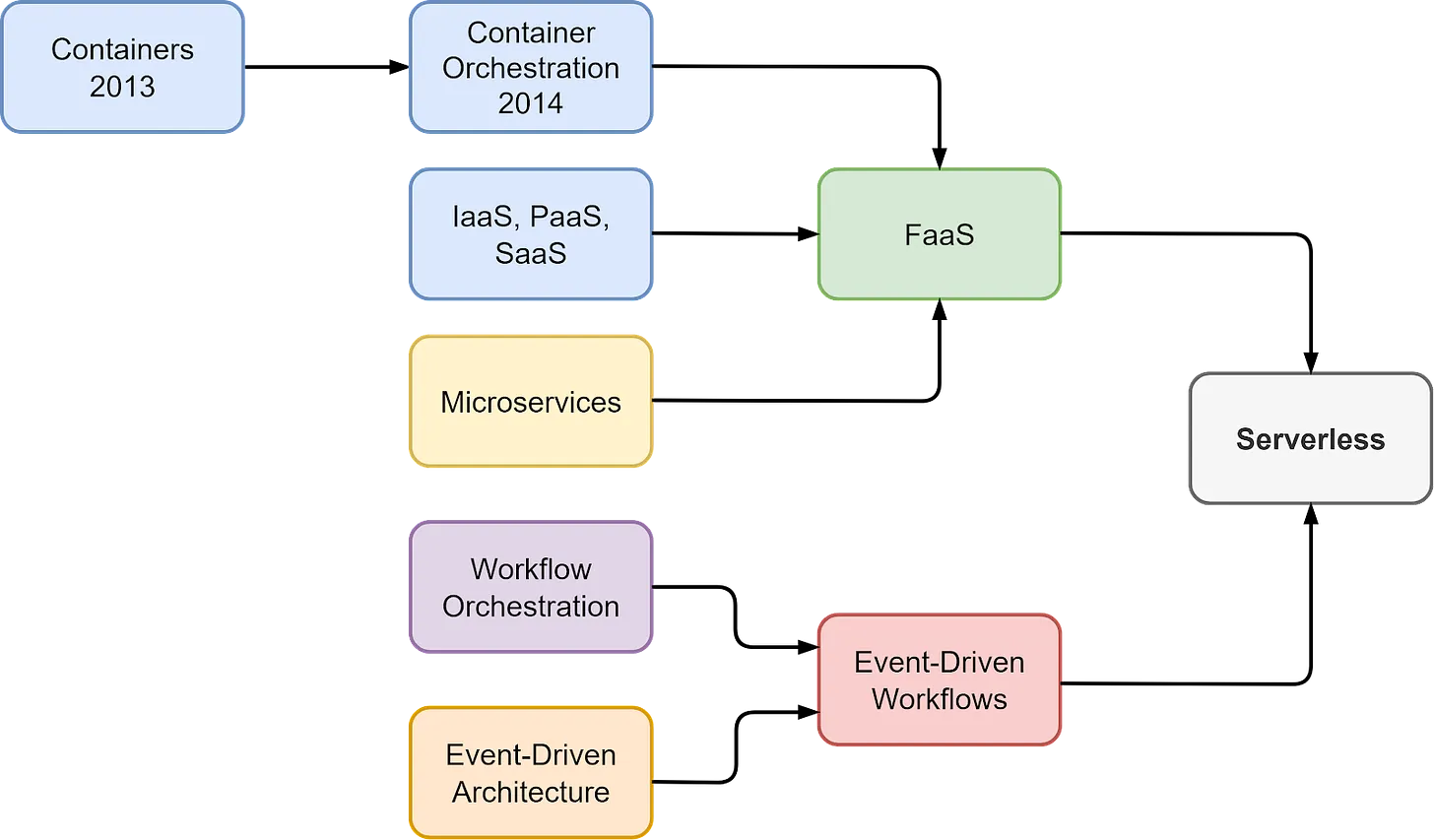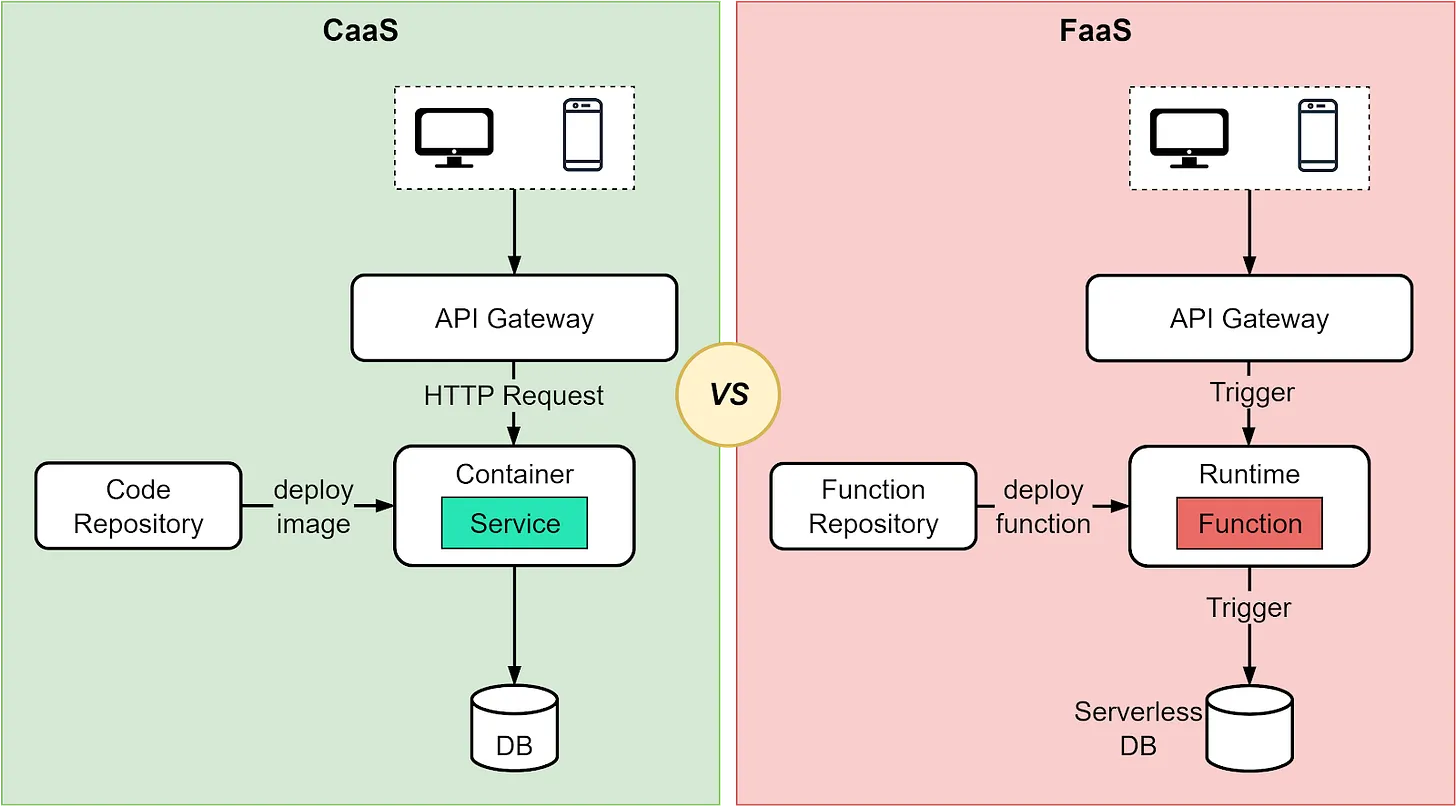Does Serverless has servers? (Damn!!!)
 Sanskar Gupta
Sanskar GuptaServerless computing refers to the paradigm of building and running applications without managing the underlying servers. With serverless, the cloud provider abstracts away the servers, runtimes, scaling, and capacity planning from the developer. The developer focuses on the application code and business logic, while the cloud provider handles provisioning servers, auto-scaling, monitoring, etc., under the hood. Over the past decade, this “no-ops” approach has greatly simplified deploying cloud-native applications.
The term “serverless”(aaisa kuch nhi hota) is misleading since servers are still involved. But from the developer’s perspective, there are no visible servers to manage. The cloud provider handles the servers, operating systems, and runtimes. This model allows developers to deploy event-driven, auto-scaling functions and APIs without worrying about the infrastructure.
Some key enablers of serverless computing include FaaS (Functions-as-a-Service), BaaS (Backend-as-a-Service), containers, microservices, and auto-scaling. This newsletter will dive deeper into serverless concepts, architecture, user cases, limitations, and more.
The Evolution of Serverless
Serverless computing gained prominence around 2014 with the release of AWS Lambda. It allowed developers to run event-driven applications without having to provision backend servers. Functions would auto-scale based on load while AWS handled the infrastructure.
The release of Azure Functions and Google Cloud Functions further popularized this FaaS model.
With the rise of Docker and Kubernetes between 2013 and 2014, containerization and microservices made it easy to deploy serverless applications and accelerated the adoption of serverless computing.
In 2018, the Cloud Native Computing Foundation (CNCF) published the Serverless The whitepaper positioned serverless as a new cloud-native approach compared to Containers-as-a-Service (CaaS) and Platform-as-a-Service (PaaS).
The table below lists some key benefits and drawbacks of each model. CaaS has full control over the infrastructure but requires more effort in monitoring, logging, and capacity management. PaaS facilitates easier application deployment and auto-scaling but doesn’t have container portability. Serverless has the lowest requirement for infrastructure management, with autoscaling, reduced ops, and pay-per-use billing as crucial benefits.

FaaS and Event-Driven Architecture
The term “serverless” has two related but distinct meanings:
In a narrow sense, serverless refers specifically to FaaS. With FaaS, developers deploy auto-scaling function code without provisioning servers. The functions are executed on-demand based on event triggers.
FaaS functions are stateless and ephemeral(lasting for a very short time). BaaS is combined with FaaS to provide API-based services maintained by the cloud provider and offer stateful capabilities like storage, databases, etc.
More broadly, serverless implies a “NoOps” approach where developers don’t manage any backend servers or infrastructure. This concept includes FaaS, BaaS, and other managed cloud services like databases, storage, etc.
In this sense, serverless means the servers are abstracted from the developer. The cloud provider handles all server provisioning, scaling, availability, etc. Developers just use the services through APIs and don’t operate the backend.
The diagram below explains the scope of the two types of serverless.

Functions and event triggers are two key components of cloud-native architecture. The diagram below shows their evolution.
The evolution of containers, PaaS, and microservices paved the way for the development of FaaS. The event-driven workflow defines the system as a predefined set of steps where we can embed business logic. The two architectural developments make serverless computing a popular choice.

FAAS(:
FaaS (Function as a Service) abstracts away runtime management and scaling, letting developers focus solely on writing code for function-based applications. The cloud provider handles runtime environments, triggering functions via events and scaling automatically based on demand. With CaaS (Container as a Service), developers manage the entire application context and runtime environment using containers like Docker, providing more control but requiring configuration and management.
One of the main benefits of FaaS is enabling rapid scaling through fast cold starts compared to traditional servers

If u like it do give it a like :)
Subscribe to my newsletter
Read articles from Sanskar Gupta directly inside your inbox. Subscribe to the newsletter, and don't miss out.
Written by

Sanskar Gupta
Sanskar Gupta
Backend Developer in Node.Js (exploring new tech )